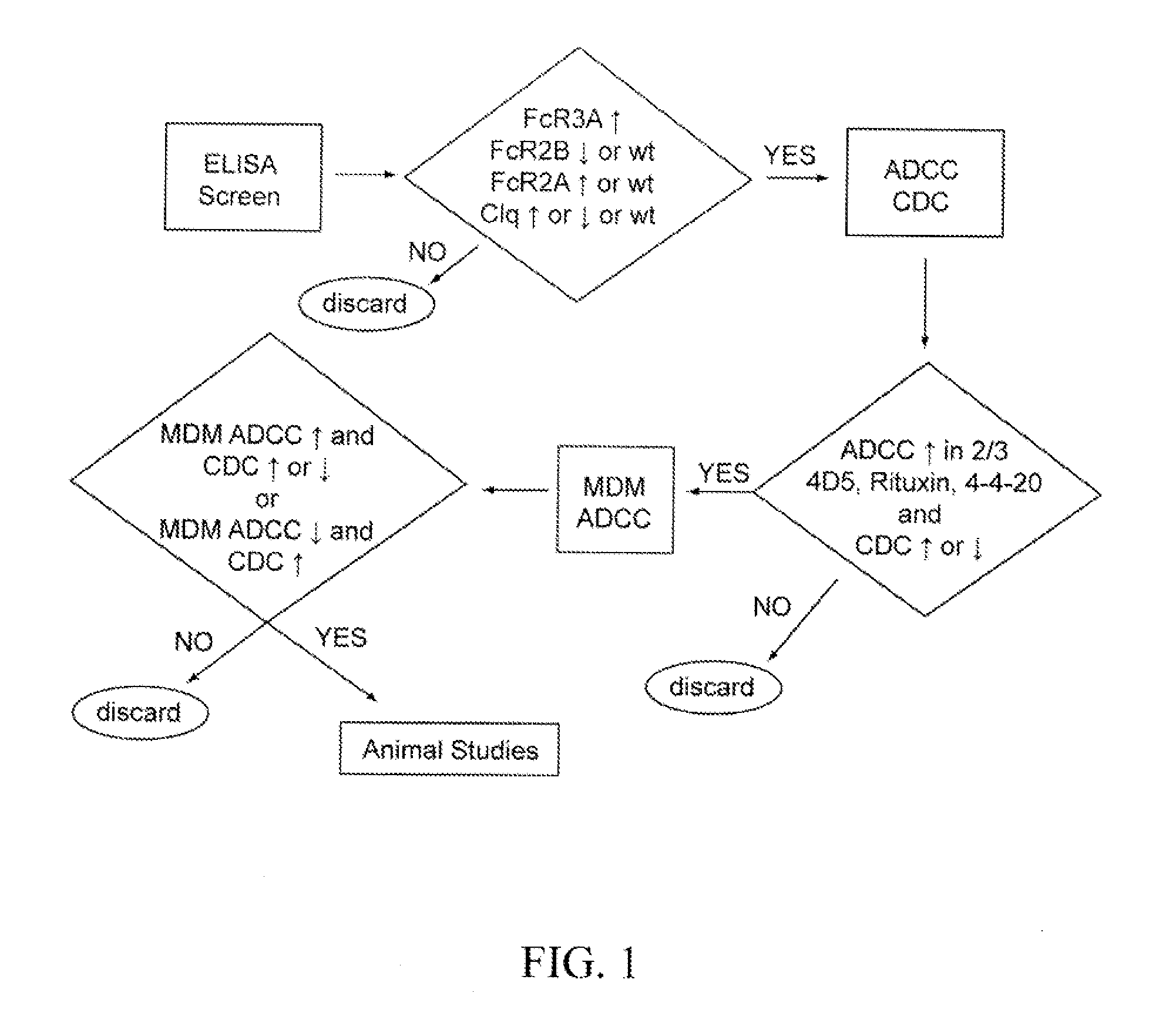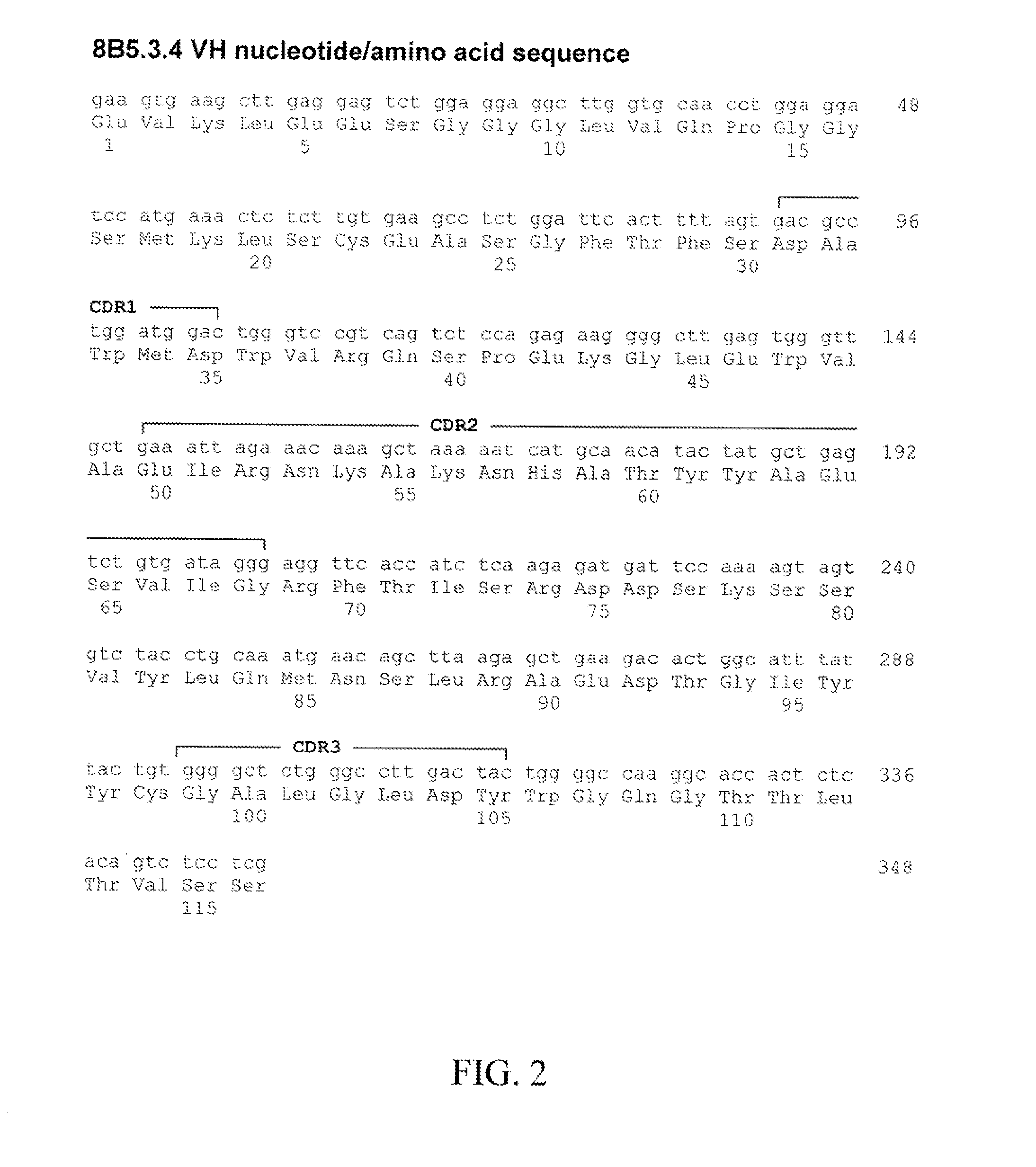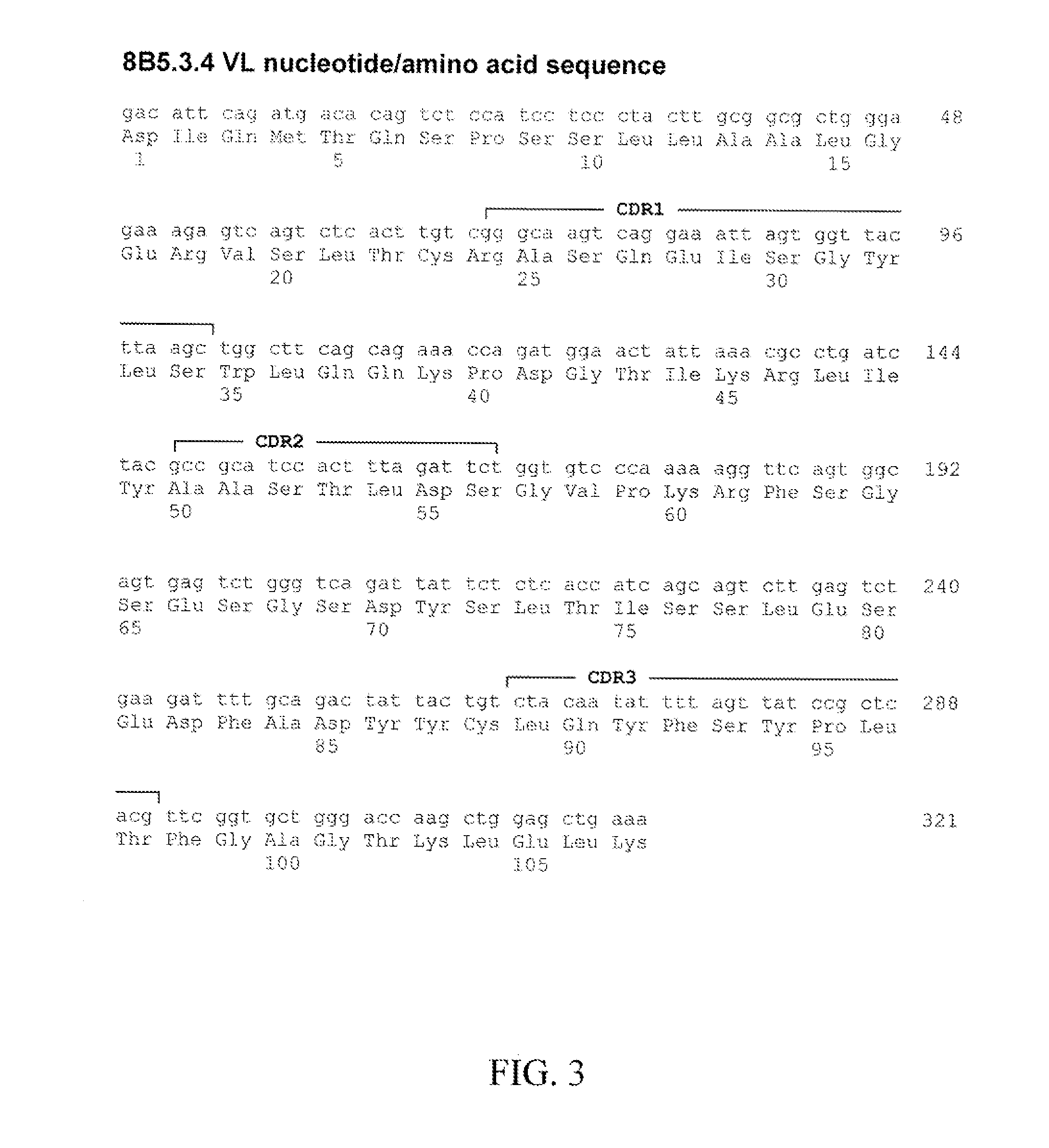Methods for the Treatment of Disease Using Immunoglobulins Having Fc Regions with Altered Affinities for FcgammaRactivating and FcgammaRinhibiting
a technology of immunoglobulins and immunoglobulins, applied in the field of methods, can solve the problems of increasing the damage of the disease, and increasing the damage of the disease, and achieve the effects of enhancing the therapeutic efficacy of therapeutic antibodies, preventing, treating or ameliorating one or more symptoms, and enhancing the effect of effector cell function
- Summary
- Abstract
- Description
- Claims
- Application Information
AI Technical Summary
Benefits of technology
Problems solved by technology
Method used
Image
Examples
Embodiment Construction
[0206]The present invention relates to methods of treatment of cancer or other diseases using molecules, preferably polypeptides, and more preferably immunoglobulins (e.g., antibodies), comprising a variant Fc region, having one or more amino acid modifications (e.g., substitutions, but also including insertions or deletions) in one or more regions, which modifications alter, e.g., increase or decrease, the affinity of the variant Fc region for an FcγR. Enhancing the ability of immunoglobulins to mediate antibody-dependent cell-mediated cytotoxicity (ADCC), complment-dependent cytotoxicity (CDC) or antibody-dependent cell-mediated phagocytosis (ADCP) provides an approach for enhancing the therapeutic activity of immunoglobulins against cancers and infectious diseases.
[0207]The invention thus encompasses therapeutic antibodies in the treatment or prevention of a disease or disorder, or the amelioration of a symptom thereof, where an enhanced efficacy of effector cell function (e.g., ...
PUM
| Property | Measurement | Unit |
|---|---|---|
| binding affinity | aaaaa | aaaaa |
| Affinities | aaaaa | aaaaa |
| binding affinities | aaaaa | aaaaa |
Abstract
Description
Claims
Application Information
 Login to View More
Login to View More - R&D
- Intellectual Property
- Life Sciences
- Materials
- Tech Scout
- Unparalleled Data Quality
- Higher Quality Content
- 60% Fewer Hallucinations
Browse by: Latest US Patents, China's latest patents, Technical Efficacy Thesaurus, Application Domain, Technology Topic, Popular Technical Reports.
© 2025 PatSnap. All rights reserved.Legal|Privacy policy|Modern Slavery Act Transparency Statement|Sitemap|About US| Contact US: help@patsnap.com



